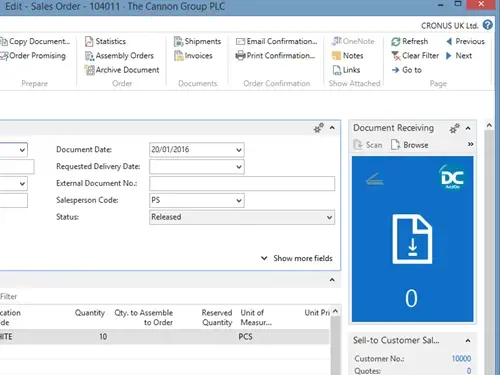How AI Can Boost Predictive Maintenance In Manufacturing
How can Artificial Intelligence be used for predictive maintenance in manufacturing? New software technologies are helping business operations.

With the increase in base functionality for Microsoft Dynamics® NAV there are now improved tools for sending and receiving documents electronically. Some of you may be familiar with some of the Add-ons that do this on the market, including our Certified for Microsoft Dynamics (CfMD) product the DC Communication Suite. So with this increased functionality in the base product, what does the Communication Suite do extra? Our solution contains three modules, which we will discuss separately.
The DC Telephone Integration tool allows integration for incoming and outgoing phone calls with over 60 telephony systems, not just the out-going calls from Skype for Business or Lync that the standard NAV Package allows. This integration includes the following features:
Incoming call contact match based on Phone No. or Email with Call-Pop
Customisable landing page for easy access to other areas of the system
Access to contacts from multiple NAV companies – access set up at user level
Store notes against the call record
Find out more about the Telephone Integration >

Dynamics NAV has recently improved the ability to electronically send documents via email in the 2016 version of the product. Document Sending is a tool that adds a wide range of functionality to the standard NAV tools with features including:

With the latest releases of Dynamics NAV there is functionality to link files to NAV records. This gives greater visibility and helps to keep track of customer interaction and transactions. However, with the DC Document Receiving tool, users are able to:

To find out more, please see our communication suite page, or contact us for a quote and demo.
How can Artificial Intelligence be used for predictive maintenance in manufacturing? New software technologies are helping business operations.
Summarising technology changes for manufacturing companies in 2023 and what that means for 2024 such as artificial intelligence and industry 4.0
Manufacturing, Warehousing and distribution company Colorlites implements Business Central ERP with Dynamics Consultants in a phased approach